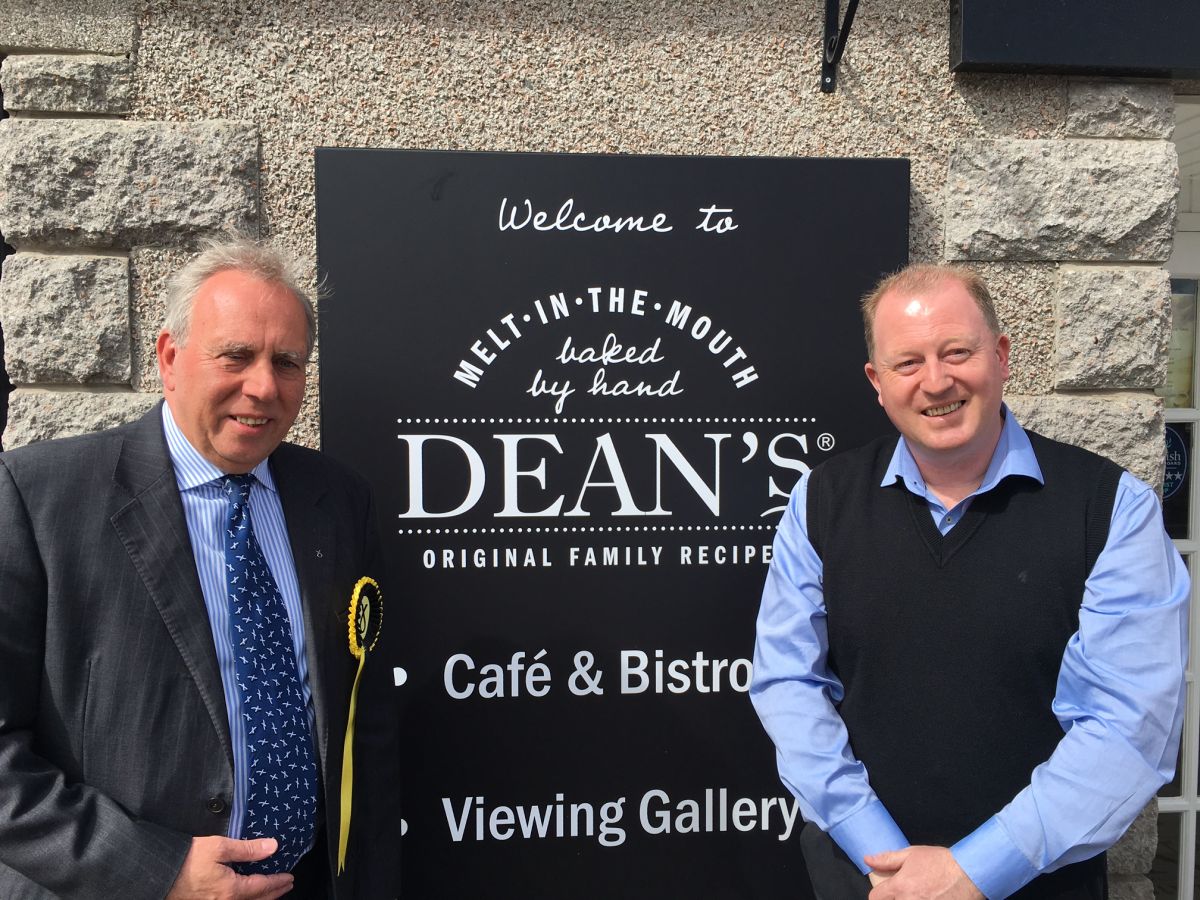Suzanne Kelly visits Tullos Hill – years after the Tree For Every Citizen scheme saw its herd of deer destroyed to protect tree saplings, though the destruction was never going to guarantee successful tree growth. It’s not just the deer that have been destroyed. Story and photographs by Suzanne Kelly.
 If you visited Tullos before the city and its expensive consultant Jamie Piper got their hands on it, you would have found an area rich in wildlife including deer. Gorse provided habitat for deer, small mammals and birds. A huge portion of the gorse is gone – and so is the wildlife.
If you visited Tullos before the city and its expensive consultant Jamie Piper got their hands on it, you would have found an area rich in wildlife including deer. Gorse provided habitat for deer, small mammals and birds. A huge portion of the gorse is gone – and so is the wildlife.
Paths have been excessively widened – you can now easily drive a SUV down them – and that meant further loss of habitat and path side plants and fungi.
Other councils in the UK are worried about damage to their wildlife sites; Staffordshire has a report warning of the damage caused by the tactics Aberdeen employs.
You can’t see the forest – but not because of the trees:
It’s one of the few reasonably clement days we’ve had in a while when I visit Tullos. On my walk to the entrance I am struck by how much the area has been transformed by the Wood Group building. We lost the land, houses were torn down, and we must have lot part of Tullos Hill if we lost the approach to the hill.
The city says that this path was narrow and difficult – or words to that effect. The path was far more like what you would find in an area that wanted to give habitat to wildlife rather than to make comfy recreational access at the expense of wildlife habitat. I think of the people who lived in the caravan park who would feed the deer. The people and the deer are gone now, and the Wood Group building and its parking facility tower over the cairn. This is progress.
Councillor Aileen Malone promised Aberdeen that shooting the deer, clearing the gorse, (while giving Piper £100,000 plus expenses now a five figure sum at last glance) would give us a forest. The Liberal Democrats had the twee-sounding ‘Tree For Every Citizen’ scheme as its election pledge last time around; some laugh at the fact the only pledge they did uphold was the one everyone asked them not to – killing deer to plant trees on a rubbish tip unlikely to sustain trees.
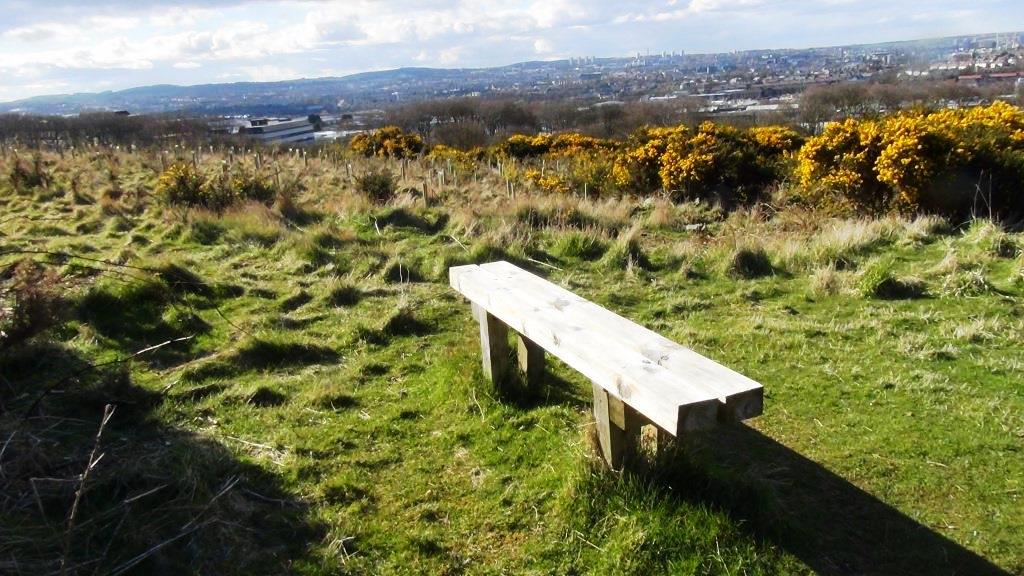 This was my first visit to the Hill in a while; in particular I wanted to see how the trees and weeds were doing. I was struck by how wide the paths are – clearly the intention is to turn a former wildlife area into someone’s idea of a suburban recreation area suitable for vehicles.
This was my first visit to the Hill in a while; in particular I wanted to see how the trees and weeds were doing. I was struck by how wide the paths are – clearly the intention is to turn a former wildlife area into someone’s idea of a suburban recreation area suitable for vehicles.
There is the bench. There are the parking lot signs with their cheery squirrel and trees.
There is something prematurely self-congratulatory and smug about these items which is very much removed from the reality of what the hill looks like and its use for wildlife at present.
I did see one bit of wildlife – a bee was on a gorse flower. Gorse flowers year long providing food to bees; most of us seem to understand the importance of providing food for bees, which are under a variety of threats, not least loss of habitat like this. Pesticides were used on Tullos; finding a specific record of who was paid what to use which chemicals is not a simple task. Fungi which used to appear alongside the narrower paths have not been seen (at least by me) these past few seasons since the clearing and culling began.
No, I didn’t see any trace of a deer or any small mammals on the hill. There was barely any bird song, either. Some 10 years ago several species of bird were to be found; some of which were increasingly rare in the wild. I don’t’ see them nesting in this area again in numbers any time soon.
The pictures do show some trees have grown. There are also fairly new tree guards – far taller than any used previously. We were once told tree guards had ‘negative visual impact’ so we were not going to use them when we could kill the deer to stop them browsing the young trees instead. Where there are trees that have grown taller, even in the light wind on the day of the visit, they could be seen moving considerably in the breeze.
Experts previously told the city that trees which do establish will be subject to wind toss – there just simply is not good rooting material on this former waste tip – the roots won’t be sufficiently anchored to stop strong winds blowing the trees over.
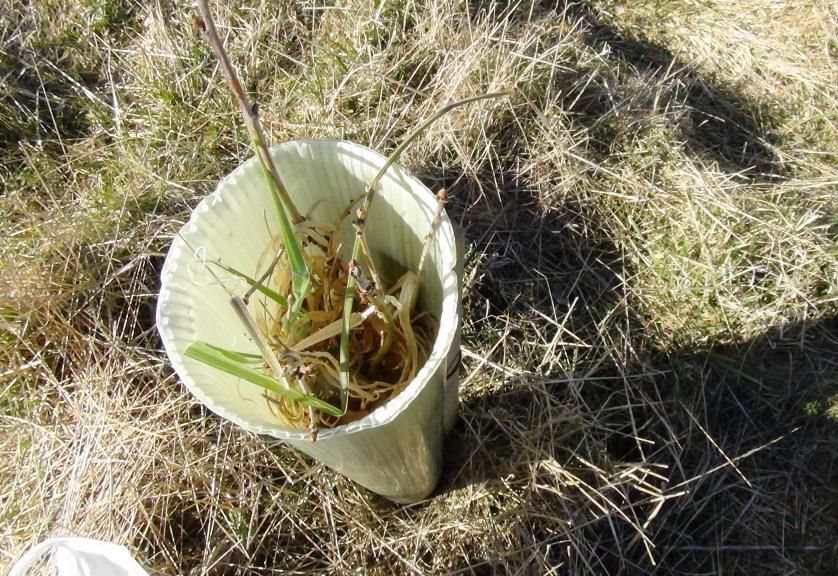 Some trees have no growth at all, despite being in intact tree guards – no deer has damaged them. On the other hand weeds choke many of the trees around and inside of the tree guards.
Some trees have no growth at all, despite being in intact tree guards – no deer has damaged them. On the other hand weeds choke many of the trees around and inside of the tree guards.
The city has already been warned that the job they did is not good enough for the funding received. It may not be too much longer before we see Aberdeen City hand back another tranche of money to the government for failing to grow trees on the rubbish tip of Tullos Hill.
As the old saying goes, ‘insanity is doing the same thing over and over, but expecting different outcomes’. The City planted here before. Weeds killed the trees which did not thrive in the poor soil conditions.
The City blamed deer, and instead of using non-lethal methods (tree guards, fencing, choosing plants deer would not eat), The City slaughtered over 40 animals, then planted trees again. The trees are being killed by weeds, the trees are not thriving in the poor soil conditions.
The only people thriving from this sad state of affairs are those seeking to build their reputations (despite the actual facts) by proclaiming this to be a success – them, and the ones pocketing money for expertise (?), fencing (which originally we said we could not afford), herbicides and trees.
As part of the money he earned, Jamie Piper branded the thousands of citizens who signed a petition against the scheme and the 4 community council objectors as ‘a small but vociferous minority’. Who but a small and vociferous minority now says the hill is better off than before? No one other than those who gained say that the hill looks better now and is home to more wildlife.
There is no forest, and all the signs are there won’t be one. The city may have erected a new parking lot with signs to the ‘diamond woods’ – but calling Tullos a wood is hardly trades-description accurate.
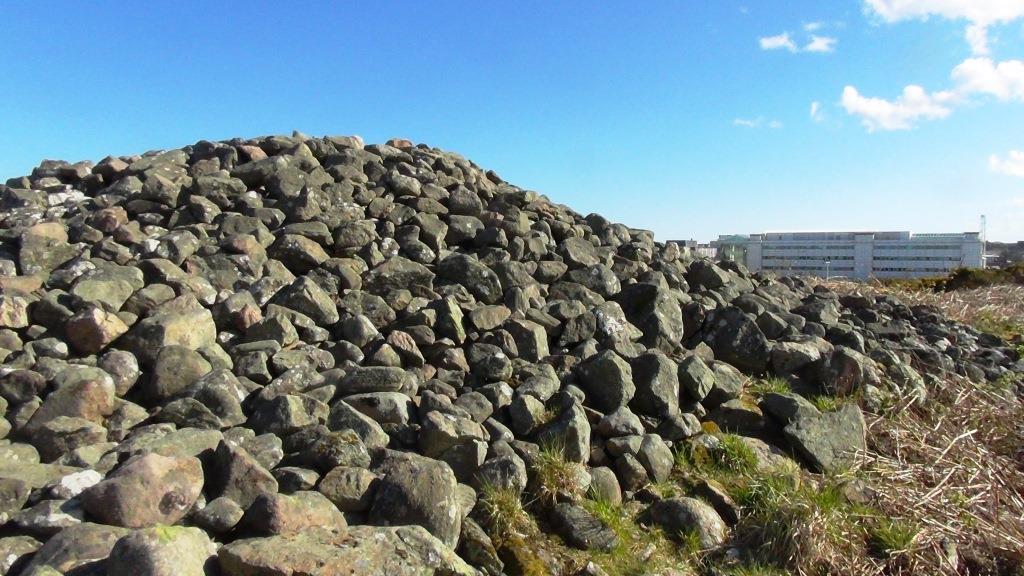 A View from the Cairn – of Wood Group’s new HQ:
A View from the Cairn – of Wood Group’s new HQ:
Tullos had its paths widened.
The city also seems to have surrendered an access point and a large area adjacent to one of the three ancient cairns for the footprint of the Wood Group’s new HQ (a building and car park that by all accounts are underused).
The car park looms over the cairn, and the remaining wildlife is hardly going to benefit from the air pollution resulting from the construction and the uses (even if minimal) of the new parking.
What did the City say about losing the parking and the access?
“It would appear that in recent years the Council failed to maintain the car park and that the previous owners of the land (before Argon bought the site last year) have restricted access in order to stop unauthorised encampments from occupying the land. This has resulted in the car park falling into disrepair and access to the hill becoming overgrown, although it was still possible to walk from the car park onto the hill.
Whilst the proposed office building could be constructed and site laid out with the existing public car park remaining in place, Argon expressed a desire to have the car park removed, in order to allow more extensive landscaping to be provided around the development.”
– email to Cllr N Cooney of April 2014
So, we couldn’t maintain one parking lot on land gifted to us, directly adjacent to the Hill’s entrance – land coincidentally useful for this development. However, the city is confident it will be able to maintain the new parking lot.
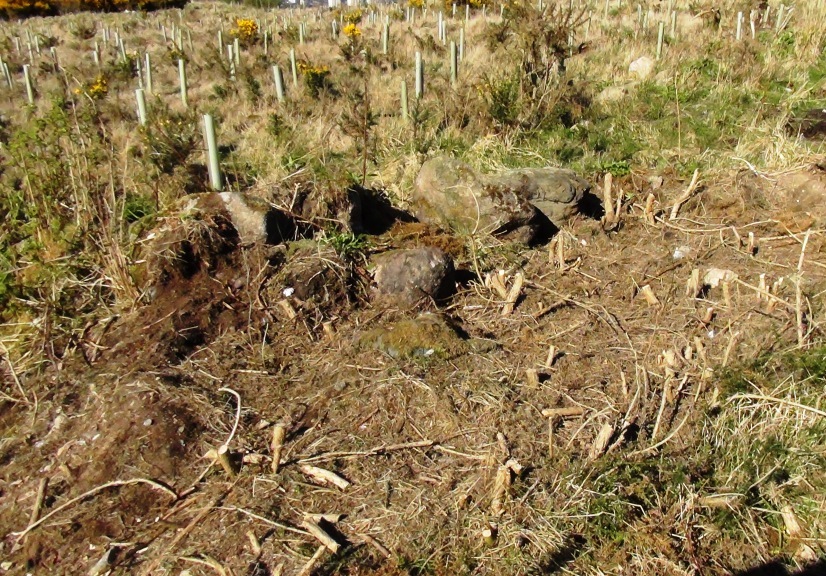 As to the quality of landscaping referred to in the email; other than having the Wood Group building and its parking making a negative impact on Tullos and the cairn, it’s hard to see what landscaping they are talking about.
As to the quality of landscaping referred to in the email; other than having the Wood Group building and its parking making a negative impact on Tullos and the cairn, it’s hard to see what landscaping they are talking about.
As an aside, the email in question admits that air quality on Wellington Road falls short of desired standards.
A new building and its parking will hardly help improve things.
A few changes, none for the better:
More trees have been planted; some of the new guards dwarf the previous tree guards. This is likely the result of a recent warning from the government to ACC that the trees aren’t sufficient either in number or condition, and there is a chance the grant may have to be returned. I wonder how much this new work has cost.
Not content with the area cleared for the tree scheme, gorse clearance continues apace. It is as if there were some pressing need to get rid of this important plant when the reality is they cannot control the trees they have planted – perhaps watching the gorse grow effortlessly is an affront to the egos involved.
 Overall the effect is one of dead and dying gorse separated from empty tree guards, all surrounded by weeds. It is as if a man balding in patches were desperately trying to implant new hair – then again, I’ve been concerned lately with the Trump campaign – and this is probably where that image came from.
Overall the effect is one of dead and dying gorse separated from empty tree guards, all surrounded by weeds. It is as if a man balding in patches were desperately trying to implant new hair – then again, I’ve been concerned lately with the Trump campaign – and this is probably where that image came from.
If you go down to the woods today, you won’t be going to Tullos. Bring back the deer.
Remember – the people who insisted this was cost neutral and must go ahead are Liberal Democrat Aileen Malone and the rest of her party: are you going to vote Lib Dem this year? NB – the price of this ‘cost neutral’ scheme so far (less any new planting) is estimated at £600,000 – and no officer or supporter has been called to account for this remarkable mismanagement to date.
- Comments enabled – see comments box below. Note, all comments will be moderated.
